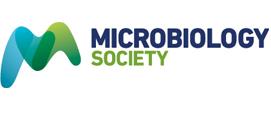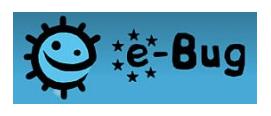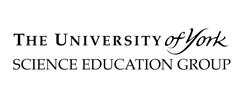Linking to hospitality and catering in science
Linking learning in science to the vocational course a student is following can be very motivational.
Microbes are widely used in food production to preserve food, enhance flavour or improve texture, and so this is the ideal topic in biology to grab the attention of students who are following vocational catering courses. This resource list highlights some great activities and practical work which look at this area more closely, as well as nutrition and the use of enzymes in food production.
Whilst this list provides a source of information and ideas for experimental work, it is important to note that recommendations can date very quickly. Do NOT follow suggestions which conflict with current advice from CLEAPSS, SSERC or recent safety guides. eLibrary users are responsible for ensuring that any activity, including practical work, which they carry out is consistent with current regulations related to Health and Safety and that they carry an appropriate risk assessment. Further information is provided in our Health and Safety guidance.
Practical Microbiology for Secondary Schools
In catering, students will learn about baking bread and related bakery products where the fermentation process achieves three primary objectives: leavening (carbon dioxide production), flavour development and texture changes in the dough. The investigation on page 28 illustrates the effects of temperature on yeast (enzyme) activity in bread making. You could extend this to investigate the use of different types of flour or varying the quantity of yeast. As part of their vocational training, students will also need to appreciate the importance of personal hygiene –hand washing and general body hygiene. This can be a dull topic on paper, but an investigation in the science lab will really bring the subject to life! The investigation on page 40 uses the harmless yeast Saccharomyces cerevisiae to simulate the contamination of hands with faecal microbes and the effectiveness of hand-washing in removing them. Different brands and thicknesses of toilet paper and different types of soap may be evaluated. Why not link up with the catering department to investigate the importance of cleanliness in the kitchen? Students can take swabs from a food preparation area and inoculate agar plates. Then clean the area thoroughly and repeat the process to find out how effective their cleaning is. Incubate the plates at 20–25 °C in the science lab for 2–3 days. After incubation the plates should be taped around the circumference so that the lids cannot be removed. To extend this activity, Microbiology Online have a great resource to help students observe colony morphology which can be downloaded as a pdf. Additionally, in the teachers section of this website, you'll find safety guidelines, risk assessment, good microbiological practice and spillage management. Useful guidance for technicians can be found in the section on Preparation of media and cultures.
Paul Gray - Bakehouse Manager
If you've ever been to York or Harrogate, you will probably have been to Betty's!
This is a film showing the role of the Bakehouse Manager at Betty's, which can be used to introduce the bread making activity above.
Useful Microbes for Secondary Science
This simple practical illustrates to students another use of microbes in food production. They make a basic yoghurt and then examine the culture under the microscope. This is a good opportunity to develop skills in slide preparation and microscopy.
Students make observations before and after fermentation.
Although precautions are taken not to introduce contamination, tell students that the yoghurt should not be eaten or sampled. Food-producing facilities need to be inspected and are scrupulously clean. The school laboratory is neither.
The activity can be extended by having students plan investigations into factors such as the effects of temperature, starter culture volume or how storage conditions effect shelf-life of the product.
How could they test the quality of the yoghurt? Eating it is not an option, especially when testing shelf-life as the product will eventually become spoiled. Students can suggest objective measurements. If time and resources permit, the investigations can be carried out.
The Ploughman's Lunch
Once students are familiar with fermentation in bread making, Microbes on the menu (page 2) provides a fascinating list of foods which use microbes in their production, including olives, salami and soy sauce. You can use these as exhibits around the room with information about the type of microbe and its effect on the food.
In the main activity students investigate the production of sauerkraut by fermentation of cabbage.
There’s a lot of science in the making of sauerkraut! The salt removes fluid from the cabbage by osmosis, so this provides a nice opportunity to revise osmosis if students have already covered it.
Students can compare the bacteria in freshly prepared and older sauerkraut by inoculating ready poured plates, practicing aseptic technique.
When making sauerkraut, the sugars are fermented by lactic acid bacteria into organic acids which then inhibit the growth of other microbes as the pH drops. Population growth is not in the biology subject content at this level, but as an extension acivity you could simplify the questions and answers from the worksheet and make them into cards, allowing students to work in pairs to match them up.
For homework, can they devise a menu using only food and drink which use microbes in their production?
Microbes on the Menu
This is a great handout to go with the activity above, or for you to use to add interesting information to the exhibition of foods around the room which is suggested as the starter activity.
Alternatively you can use it as stimulous material for homework activity suggested above: devise a menu using only food and drink which use microbes in their production.
Also included are some recipes that utilise microbes. These are for:
• bagels
• elderflower 'Champagne'
• ginger beer
• yoghurt
• Quorn and mushroom stroganoff
• Thai tofu coconut curry
You could work with the catering department so that students cook one of these recipes in the same week that they investigate the use of microbes in their science lessons.
Making chocolates with soft centres
Chocolate is guaranteed to capture the interest of all students, but those taking a vocational qualification in catering will be especially interested in this activity as they will start to use enzymes in their cooking when they reach level 3.
This video, from the National Science Learning Centre, shows how to make soft centred chocolates, using enzymes, which if created in a food safe environment, using food materials and following a scrupulous hygiene regime, can be eaten or given to loved ones.
The activity is a useful way to bring vocational science ideas into the classroom, and is a good demonstration of how science is applied in the real world – in this instance how creme eggs get their soft gooey centre.
A solid paste with the consistency of fudge is made using sucrose (table sugar). A small amount of invertase is added to this fondant before it is covered in chocolate. During storage for a couple of weeks at 18 °C, the enzyme partially liquefies the sucrose within the chocolate shell as it splits the disaccharide sucrose into the monosaccharides glucose and fructose.
The optimum temperature for this enzyme is 60 degrees, and so this activity is useful for dispelling student's misconceptions that all enzymes start to denature above body temperature, and for linking to ideas about extremophiles. This catalyst article describes a range of extremophiles.
Invertase is available for this activity on the NCBE website. They have also produced a handy guide for the general use of enzymes in the classroom, available on the same page.
Glo Germ Gel
This is an exciting way to introduce a unit on communicable diseases and how they are spread, which links well with catering courses where students look at personal hygiene, hand washing, food contamination, food poisoning and the importance of reporting sickness.
Using special UV powder or gel to represent microbes, students can see how microbes can be transferred from person to person or onto surfaces. Using a UV torch you can see who the powder or gel has been transferred to and how effectively they remove it when they wash their hands in different ways.
For an alternative that students will never forget, theTeachers TV film Aviflu shows how to use a harmless invisible flourescent dye to illustrate the transmission of microbes. Whilst the lesson in the film looks at the spread of viruses and some common diseases caused by them, you could easily adapt the idea to fit a catering context by investigating food contamination, food poisoning and the microbes which cause them instead.
During the lesson, students will be unwittingly spreading a diesease themselves, with about two thirds of the class becoming infected by the end of the lesson from a single source! Students will be shocked and amazed to see how far the dye has spread.
A mix up in the bakery
This is an assessment for learning task from the Royal Society of Chemistry. Students are set a problem by the manager of an imaginary bakery. The bakery is looking for two people to do some occasional laboratory work for it. To decide who to employ, the bakery manager asks the school to set up an analytical exercise for students to show what they can do. In the trial, groups compete with one another to tackle the problem set by the bakery manager.
The labels from containers of ingredients have been lost, and students must devise tests to identify the following ingredients:
Sugar (sucrose)
Baking soda (sodium hydrogencarbonate)
Salt (sodium chloride)
Plain flour
Citric acid
Baking powder




